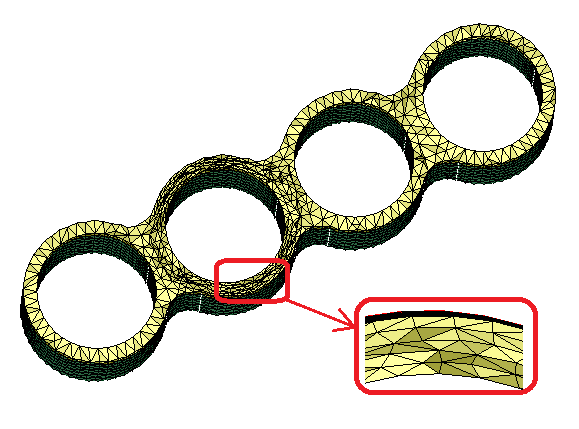Volume Layer Mesh Control
Introduction
Finite element modeling of thin parts using tet-mesh can be more effective if one can generate multiple layers of elements through the thickness. The standard approach to achieve this is by controlling the surface mesh size. If the user desires to generate 3 layers of elements through the thickness, then a surface mesh with mesh size 1/3 of the thickness has to be generated.
Suppose a solid, for example an engine block, has thick and thin regions, or regions that vary in thickness, then it becomes difficult to control the size of the surface mesh and therefore the number of elements through the thickness of the resulting volume mesh.
Volume Layer Mesh control makes it easier to generate layers of Tet elements along thin regions. This allows to specify the number of layers of elements desired though the thickness.
The user can also specify the number layers in terms of the layer thickness. This option is useful when the number of layers have to change with the thickness for a body that has regions of variable thickness. This mesh control can be applied either to faces or bodies.
In case when the number of layers of elements results in elements larger than the mesh size, then the average element size takes over and the number of layers can exceed the specified value. This is explained with an example. When layer mesh control is applied with a layer thickness of 5mm to a thin region of total thickness 15mm and when the entire body is meshed with a mesh size of 3mm, instead of creating layers with 5mm, layers with 3mm will be created. This is because the average mesh size is less than the thickness of each layer.
Higher priority is given to the quality of the TET elements over the layers of elements. It means, there is a possibility that the desired layers of TET elements might not be achieved in regions where the quality is not met.
Face
User can select the Face and apply volume layer mesh control, Tet layers are generated based on "Number of Tet Layers" specified.
Body
User can give Volume Layer mesh control for the entire body instead of Faces. Mesher identifies the thin regions in the body and decides to add layers of Tet elements specified by the user.
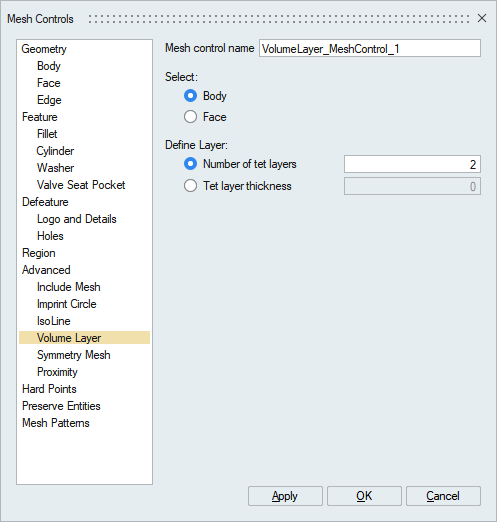
Example : Engine block - bore region
An engine block is a good example where there are thin regions between the cylinder bore and the water jacket.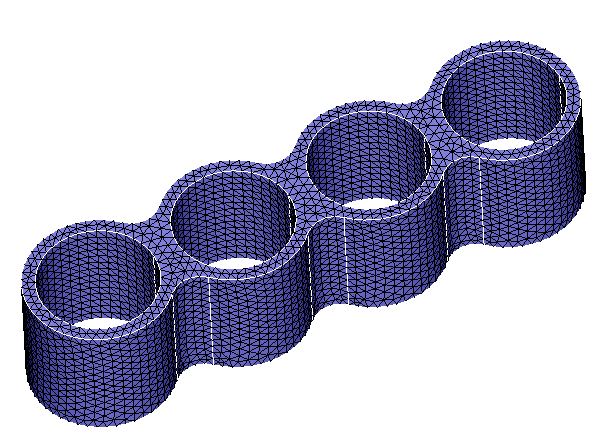
When meshed with a mesh size of 10, a tet-mesh is generated with only one element through the thickness.
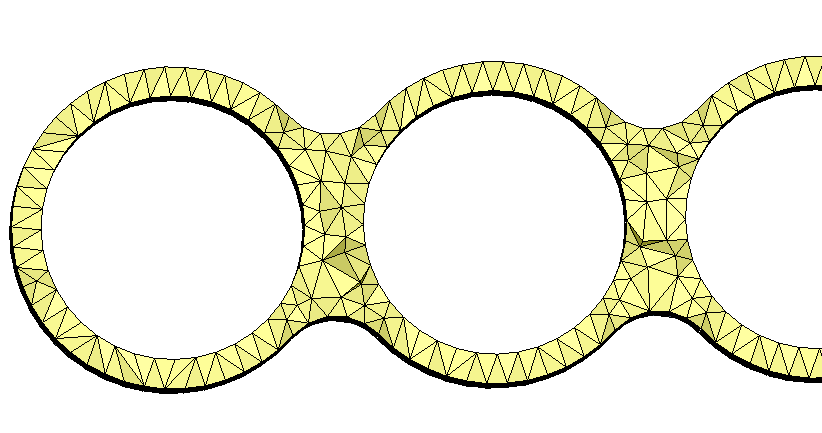
For the same body, layer mesh control is applied with number of layers as 3 and volume mesh is done with a mesh of 10. In thin regions, 3 layers tet elements are created as shown below.
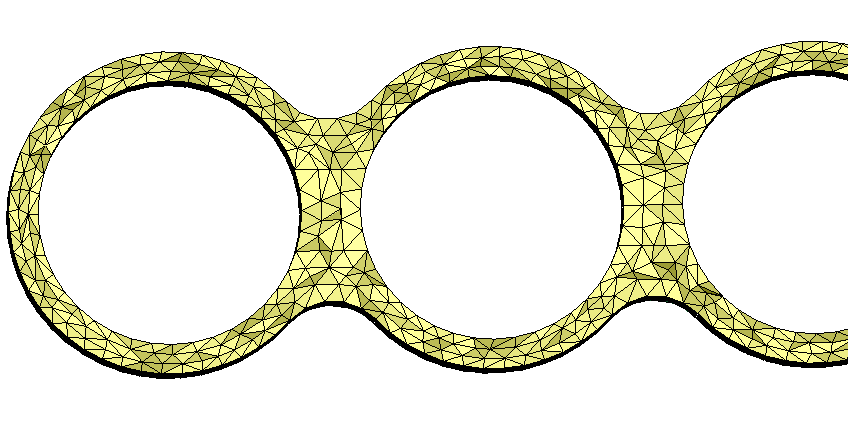
A similar result can be achieved by defining "Tet Layer Thickness" as 3.333 instead of "Number of Tet Layers".
Volume Layer Mesh control can also be applied to faces. For one of the bore region Volume Layer Mesh Control is applied with Number of Layers as 5.
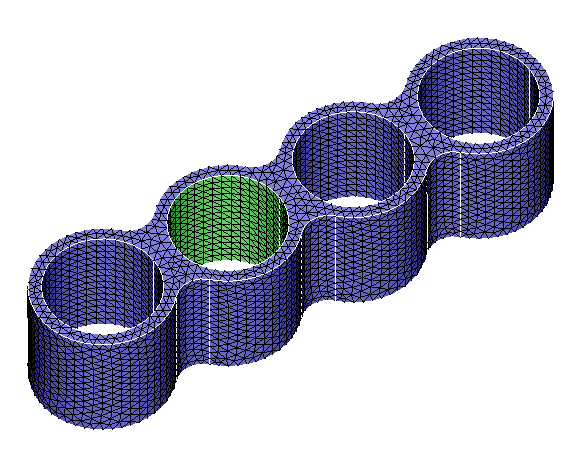
The model is meshed with a mesh size of 10 and the output with 5 layers of tets is shown below.
